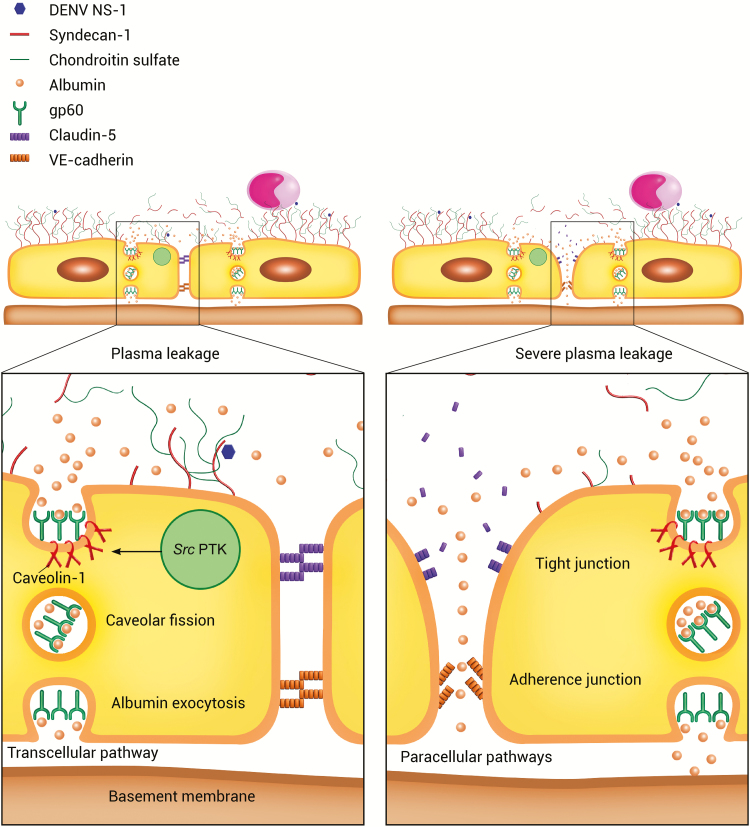Figure 3.
Proposed mechanism of microvascular leakage in dengue infection. Plasma leakage: dengue virus (DENV) nonstructural protein 1 (NS1)–induced degradation of syndecan-1 and chondroitin sulfate results in gp60 activation by albumin. Gp60 activation leads to phosphorylation of the Src protein tyrosine kinases (PTKs) and caveolin-1, which is responsible for regulation of caveolar fission. Cytokines and chemokines can also stimulate activation of Src PTKs. This process increases albumin exocytosis through the transcellular pathway. Severe plasma leakage: Claudin-5 degradation causes retraction of endothelial cells and opening of intercellular gaps, allowing albumin movement into the extravascular space through paracellular pathways. Albumin leakage that occurs through both paracellular and transcellular pathways results in severe plasma leakage.

